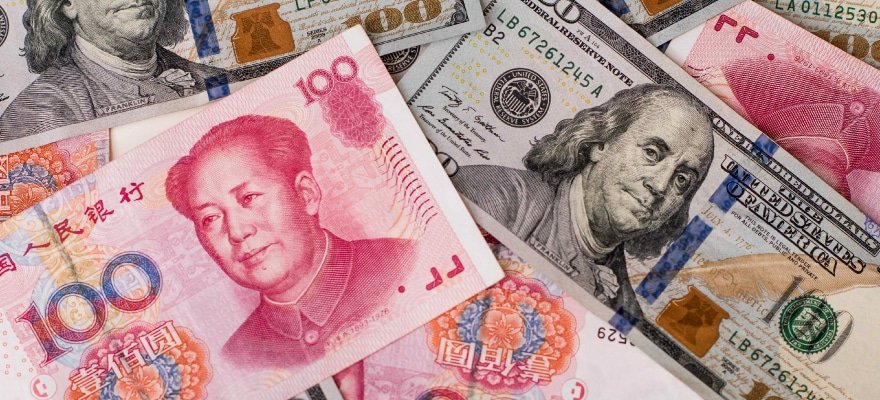Economic Indicators
ISLAMABAD: The economic landscape of Pakistan has shown a gradual recovery following the initiation of a nationwide crackdown in September 2023 as key economic indicators demonstrated improvement. Law enforcement agencies have been actively pursuing individuals engaged in hoarding and smuggling. The primary task is to eliminate the hoarding of the US dollar and essential commodities and discourage smuggling.
The first advantage of the crackdown is a steady appreciation of the rupee value against the US dollar. In the open market, it dropped from 330 rupees in September to 281 rupees by October 19, 2023. It shows a robust improvement of Rs 49 in the value of PKR in open market trading. In inter-bank trading, the US dollar has fallen from 307 rupees to 279 rupees (as of October 19, resulting in a 28-rupee decrease against the Pakistani rupee. The continuous decline of the US dollar can be attributed to the ongoing crackdown, which has sidelined market manipulators responsible for artificially inflating the dollar’s value.
Analysts now speculate that the real value of the dollar could range between 270 to 275 rupees. If the value of the dollar falls below this benchmark, investors will resume buying anticipating a medium-term gain from possible gain in the US dollar amid renewed buying. Dollar-rupee exchange rate is one of the key economic indicators.

Prior to the crackdown, the surging dollar was taking a toll on the economy, causing frustration among the public and fueling inflation. Given Pakistan’s heavy reliance on imports of essential consumer items such as petroleum products, gas, edible oil, ghee, tea, and more, the dollar’s value holds immense significance for the economic progress. In addition to the dollar’s decline, the prices of some essential consumer items decreased as market manipulators ceased their extortionate practices.
Economic indicators show a significant improve after the launching of crackdown
However, the challenge remains that, despite the dollar’s decline, the interim government may not be able to reduce electricity and gas prices as these are tied to the IMF program.
Stock Market Gains 3500+ Points
The stock market (a major economic indicator) has also regained momentum, with the benchmark KSE-100 index closing above 50,000 points on October 19, 2023. Thus, the PSX benchmark index has gained more than 3,500 points within a month after the beginning of nationwide crackdowns against smuggling and hoarding. This has renewed investor confidence following the crackdown on smugglers and hoarders and the recent announcement of the general election date. A consistent decline in the value of the dollar has mitigated investors’ losses in the stock market. For example, the appreciation of the US dollar on a daily basis was eroding the value of shares and profitability of investors in the foreign currency.
SBP Reports 5.3% Growth in Remittances in Sept 2023
The State Bank of Pakistan has reported a 5.3 percent month-on-month increase in the inflows of remittances in September 2023. According to the SBP’s data, overseas workers’ remittances recorded an inflow of US$2.2 billion in September 2023. In terms of growth, during Sep 2023, remittances increased by 5.3 percent on m/m. Meanwhile, in the first quarter of the ongoing fiscal year, the SBP recorded a remittance inflow of US$6.3 billion. Remittances inflows during Sep 2023 were mainly sourced from Saudi Arabia ($538.2 million), United Arab Emirates ($400 million), United Kingdom ($311.1 million), and United States of America ($263.4 million).
Forex Dealers Surrender Nearly $1 Billion to Banks
The continuous crackdown on illegal forex trading and smuggling proved beneficial for the economy. It resulted in a surplus of up to $900 million in the open market. Currency dealers have praised the effective administrative measures taken, and they attribute this success not only to the crackdown but also to policy reforms related to Afghan transit and the smuggling of Iranian oil, which have helped preserve hard-earned dollars.
This significant influx of funds into banks signifies a positive impact. As a direct consequence of the crackdown, the daily average trading volume of exchange companies has surged from $5-$7 million to $50 million. The State Bank of Pakistan (SBP) has been buying dollars from the interbank market for debt servicing. In the first week of October 2023, the SBP held $7.6 billion in reserves. Bankers have noted higher inflows in the interbank market, as the dollar’s day-to-day depreciation has prompted exporters and forex dealers to exchange their foreign currencies amid declining prices. This increased activity in the interbank market contributes to the overall positive trend.
Fluctuating Forex Reserves
The foreign exchange reserves of Pakistan, nonetheless, are dwindling gradually in the absence of inflows of expected foreign loans and investment. In July, the SBP’s reserves surged to $8.1 billion (from $4.46 billion in June), when the IMF released a $1.1 billion tranche for Pakistan. Since then, the SBP reserves have dithered to $7.61 billion by Sept 28, 2023.
In a surprising turn of events, the foreign exchange reserves of the State Bank of Pakistan (SBP) increased by $56.4 million, reaching $7.7 billion during the week ending on September 15, 2023. However, in the first week of October, the reserves again slightly fell. Despite a crackdown and a steady decline in the dollar-rupee parity, the foreign exchange reserves did not show growth that analysts were expecting.
Exports, Imports, and Trade Deficit Decline
Pakistan’s exports saw a modest year-on-year growth of 1.15 percent in September, reversing a trend of 12 consecutive months of contraction. However, when looking at a month-on-month basis, export earnings increased by 4.18 percent to reach $2.465 billion in September. During the first quarter (July to September), the export of goods decreased by 3.78 percent to $6.89 billion this year, compared to $7.17 billion during the same period last year. This modest recovery in export earnings for September suggests that the textile and clothing industries have begun to receive orders from international buyers after months of stagnation. However, the true extent of this export recovery will become clearer in the coming months.
The decline in export proceeds was attributed to both internal and external factors, which raised concerns about the potential closure of industrial units, particularly in the textile and clothing sector. Simultaneously, imports also witnessed a substantial decline, dropping by 25.30 percent to $3.95 billion in September from $5.29 billion in the same month last year. On a month-on-month basis, imports decreased by 12.68 percent. The overall import bill for July to September FY24 fell by 25.36 percent to $12.18 billion, compared to $16.32 billion during the corresponding months of the previous year. Import figures for FY23 decreased by 31 percent to $55.29 billion from $80.13 billion in FY22. The government has set an import target of $58.69 billion for FY24, which is an increase of $3.4 billion or 8.14 percent from the $55.29 billion in FY23.
As a result of these developments, the trade deficit significantly narrowed by 42.25 percent, reaching $5.28 billion in July-September FY24 compared to $9.15 billion during the same quarter the previous year. In September, the trade deficit decreased by 47.86 percent to $1.48 billion, down from $2.85 billion in the same month last year.
Current Account Deficit
Furthermore, Pakistan witnessed a significant reduction in the current account deficit (CAD) in August 2023, with the deficit shrinking by nearly 80% to $160 million compared to July’s $775 million. This reduction occurred despite the relaxation of import restrictions as part of an agreement with the IMF. Import and export data showed declines, contributing to the reduction in the CAD.
Inflation Remains Very High
The Pakistan Bureau of Statistics (PBS) released its weekly inflation report, indicating a 0.11% increase in the Sensitive Price Indicator (SPI) for the week ending on October 5. According to the PBS data, the electricity and gas prices lifted inflation to 37.07 percent.
I am an experienced writer, analyst, and author. My exposure in English journalism spans more than 28 years. In the past, I have been working with daily The Muslim (Lahore Bureau), daily Business Recorder (Lahore/Islamabad Bureaus), Daily Times, Islamabad, daily The Nation (Lahore and Karachi). With daily The Nation, I have served as Resident Editor, Karachi. Since 2009, I have been working as a Freelance Writer/Editor for American organizations.










